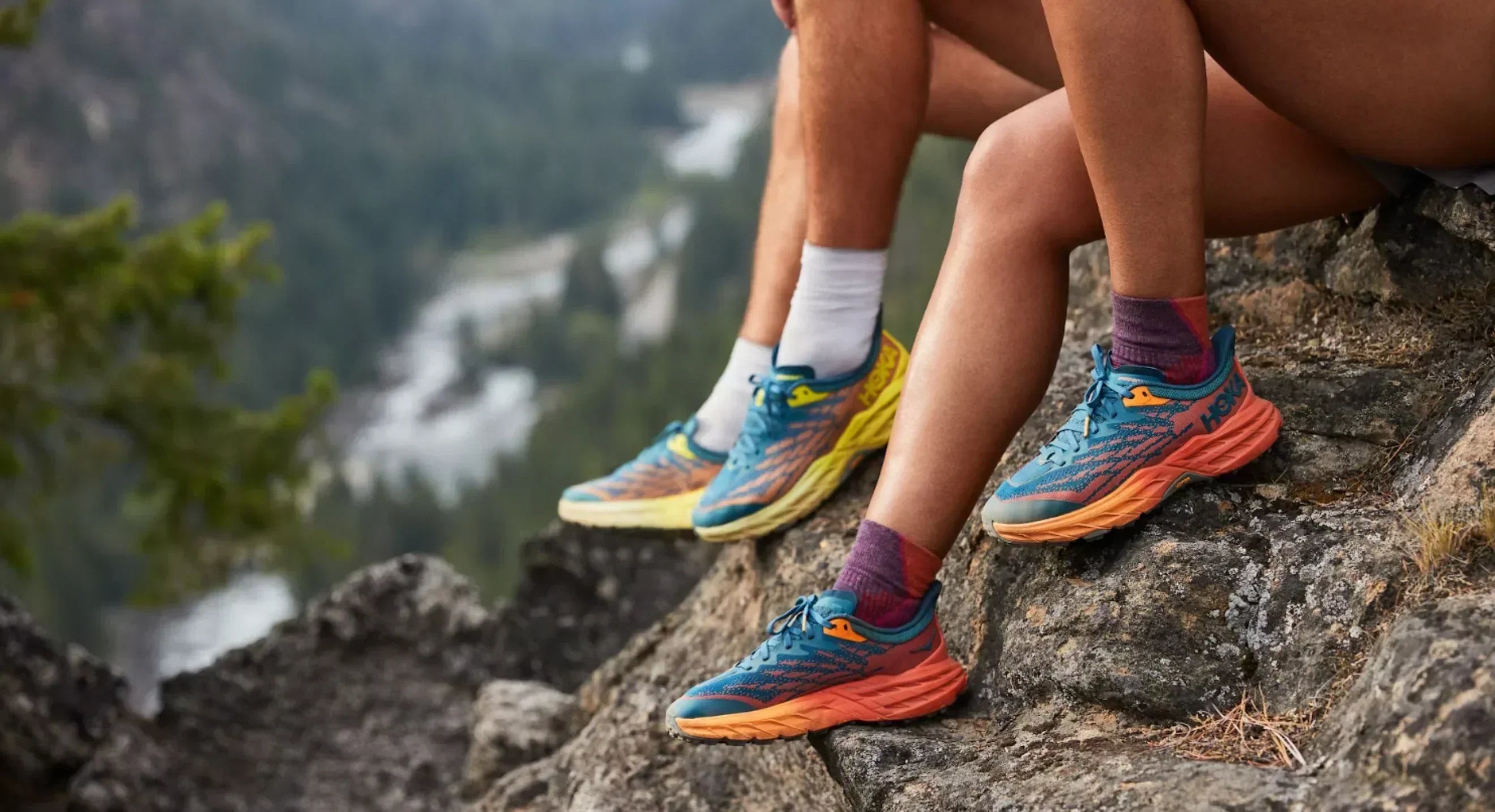When it comes to outdoor adventures, the right footwear can make all the difference. If you're an avid hiker or trail runner, you might be wondering, "Can I use trail running shoes for hiking?" The short answer is yes! However, there are some important factors to consider to ensure you have a safe and comfortable experience on the trails.

Can I Use Trail Running Shoes for Hiking?
Understanding Trail Running Shoes
Trail running shoes are designed for off-road running, offering a lightweight and flexible option that provides good traction on uneven terrain. They typically feature:
- Lightweight Materials: Trail runners prioritize speed and agility, so these shoes often use lighter materials compared to traditional hiking boots.
- Responsive Cushioning: Many trail runners offer responsive cushioning to absorb impact while running.
- Aggressive Tread: The outsoles are designed with deeper lugs for superior grip on varied surfaces.
Benefits of Using Trail Running Shoes for Hiking
- Weight: Trail running shoes are generally lighter than hiking boots, which can reduce fatigue on longer hikes.
- Breathability: Many trail runners feature mesh uppers that enhance breathability, keeping your feet cooler on warm days.
- Flexibility: The flexible nature of trail running shoes allows for a more natural foot movement, which can be beneficial on rugged terrains.
Considerations Before Hitting the Trails
While trail running shoes can be a great option for hiking, they may not be suitable for every situation. Here are some factors to keep in mind:
- Ankle Support: Trail running shoes often lack the high ankle support found in traditional hiking boots. If you’re hiking on rocky or uneven terrain, consider whether your ankles need extra support to prevent injury.
- Water Resistance: Many hiking boots are designed to be waterproof, while trail running shoes may not provide the same level of protection. If you’re hiking in wet conditions, look for trail runners that offer water-resistant features.
- Traction Needs: Depending on the trail conditions, you may need shoes with better traction. If you're tackling steep, muddy, or rocky paths, ensure your trail running shoes have an appropriate outsole for grip.
Gore-Tex Trail Running Shoes
Choose the Right Terrain
Trail running shoes are best suited for well-maintained trails with moderate inclines and less technical terrain. For example, the Sawpit Gully Track near Arrowtown in New Zealand’s Southern Lakes region is a great option for trail running shoes. This 8 km loop is well-formed, has a moderate incline, and offers fantastic views without being overly technical, making it perfect for those looking to hike in lighter, more flexible footwear.
However, if you're heading for more challenging hikes like the Gillespie Pass Circuit, you’ll want to consider more robust footwear. This trail is known for its steep ascents, river crossings, and rough terrain, where the additional ankle support, waterproofing, and sturdier outsoles of hiking boots or shoes are essential for safety and comfort.
Differences Between Trail Running Shoes, Hiking Shoes, and Hiking Boots
- Trail Running Shoes: Lightweight, flexible, and designed for speed. Great for well-maintained trails with moderate terrain but may lack the ankle support needed for rough or technical hikes.
- Hiking Shoes: A step up in terms of support and protection. Hiking shoes offer more stability than trail runners but still maintain a low-profile design. They are a great all-around option for day hikes on moderate to challenging trails.
- Hiking Boots: The most robust option, hiking boots offer superior ankle support, waterproofing, and rugged outsoles for tough terrain. These are ideal for longer or multi-day hikes, especially on uneven or rocky ground.
For a more in-depth comparison, check out our blog post on The Key Differences Between Hiking Boots, Hiking Shoes, and Trail Running Shoes.
Conclusion
Trail running shoes can be a versatile choice for hikes on well-maintained, moderate terrain. Their lightweight, breathable, and flexible design makes them a great option for casual hiking. However, for more challenging hikes, where rugged conditions require extra support and protection, you may want to opt for hiking shoes or boots. Choosing the right footwear for your adventure ensures that your feet—and your outdoor experience—are well taken care of.



